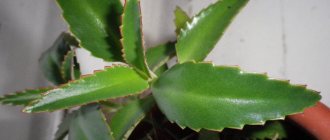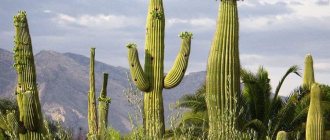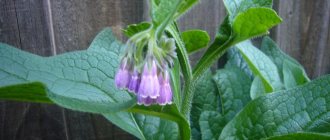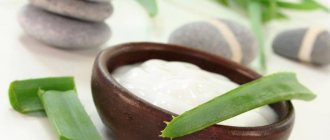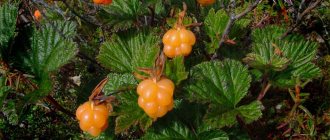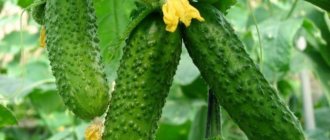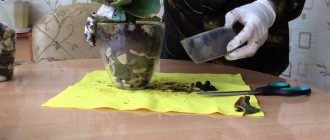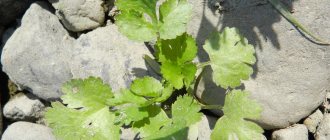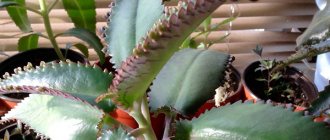- November 17, 2018
- Houseplants
- Oksana Shopina
Kalanchoe is a nice medicinal plant; a pot with such a flower can often be seen on windowsills in houses. The plant is not picky and does not require special care. For beginning florists, this is a real gift. If you like the plant, it will definitely bloom, and a blooming Kalanchoe brings tenderness to any person.
Features of the plant
Today there are more than 200 species of Kalanchoe, all of them very different. Glabrous and pubescent grow from a few centimeters to 4 meters in height, among them there are epiphytes and climbing vines. In some species, buds appear on the leaves and in inflorescences, from which a new plant begins to develop.
Kalanchoe belongs to the genus of succulent plants (the name of the genus has Chinese roots) from the Crassulaceae family.
Not all members of this family are endowed with medicinal properties. A blooming Kalanchoe can be pleasing to the eye, but be absolutely useless from a medical point of view.
The most common types of Kalanchoe are:
- Kalandiva.
- Blossfeld.
- Mix.
- Butterfly.
All these varieties have the same characteristics, they are undemanding in care, and they are also excellent home “doctors”.
Home flowering Kalanchoe is capable of releasing special fluids, thanks to which pathogenic bacteria are destroyed in the air. The juice of the plant accelerates the regeneration of the epidermis, improves blood circulation and lymph outflow.
The plant contains:
- organic acids;
- vitamins;
- minerals;
- flavonoids;
- polysaccharides;
- tannins.
The wealth of useful qualities helps a person fight various ailments by making ointments, infusions and decoctions from the leaves of flowering Kalanchoe.
Appearance of a houseplant
Plant of the Crassula family. Like all species of this family, the flower is distinguished by a wide variety of varieties and hybrids . The appearance is very diverse and can be from woody to hanging forms.
Since the plant is a succulent, the leaves are quite thick and succulent. The petioles on the leaves are very short, which is why they are also called sessile. The shape is very varied. It can be oblong, round, triangular in shape, as well as with wavy, smooth or fine-toothed edges. Color varies from reddish to green. In some species, the leaves may be pubescent, covered with waxy coatings, and also speckled.
The diameter of the flowers is small, about one centimeter. Most often collected in inflorescences in the form of an umbrella, less often in the form of a panicle.
Depending on the type, the height varies from 15 centimeters to one and a half meters .
Description of the flower
America, Africa and Asia are called the homeland of Kalanchoe. The plant is quite common and unpretentious; even in Europe, the presence of Kalanchoe does not surprise anyone.
The flower is a perennial evergreen. They can be very different, but they have common features:
- the stem is thick;
- the root system is branched;
- leaves are fleshy;
- blooms in the cold season.
By their shape and variety of shades, plants amaze human imagination. They can be green, blue, pink, purple in color, and in shape: round, oblong.
How to care for a Kalanchoe flower to bloom? There is nothing special, but you will have to find an approach to the plant. Otherwise, it will not bloom, will wither and may die.
The three most popular types included the following:
- Kalanchoe Blossfeld. It cannot boast of its height, as it reaches a maximum of 40-45 cm. The leaves are round and jagged. Flowers of different shades delight the eye for a long time.
- Kalanchoe Kalandiva. Against the background of rich green foliage, flowers of white, bright red or pink color look advantageous. The plant, which blooms generously, pampers its owners for six months.
- Kalanchoe Mix. Dark green foliage perfectly sets off the orange, pink and yellow inflorescences. This type is decorative.
To see the sweet flowering of Kalanchoe at home, you should follow some rules.
Benefits of Kalanchoe
Often, inexperienced gardeners confuse Kalanchoe and aloe. In fact, both of these plants have several similarities.
- They are classified as succulents.
- Their leaves have many similarities.
- Kalanchoe and aloe have beneficial properties.
However, these species belong to different families.
About the Kalanchoe plant, healing properties and help at home. Have you ever heard the name "Surgeon Without a Knife", "Home Doctor" or "Indoor Ginseng"? Here we are talking about Kalanchoe. The medicinal properties of this have been mentioned in historical literature.
At home, the juice of the plant has healing powers and is used in the treatment of diseases. Kalanchoe juice is used in cosmetology; it can cure skin diseases and even a runny nose.
To prepare the composition of the drops, take soft, juicy green leaves of a plant that is not watered for 6 days. In addition, canned kalahnoe juice is used in the treatment of ulcers and purulent wounds, in the field of dentistry and gynecology.
A tincture of this plant will help cope with varicose veins on the legs. It is necessary to rub the solution on the affected areas in a course that lasts up to 10 weeks.
Plant species
In the genus of these plants, you can count about 20 species, the main ones of which are grown indoors.
- Kalanchoe Blossfeld has gained popularity due to its flowers that look like umbrellas. Its inflorescences can have different colors and are located on long peduncles. This species is not at all whimsical to keep at home.
- Kalanchoe Mangina belongs to the ampelous plant species. This dwarf flower grows up to 15 centimeters in height and has unusual wild inflorescences in spring, shaped like bells.
- Flowering of Kalanchoe Degremona is typical only for winter. The appearance of inflorescences is a rare occurrence for home cultivation. The height of a plant with long leaves in the shape of a triangle can grow no more than half a meter. A distinctive feature of the leaves is the presence of purple spots.
- Kalanchoe pinnate is the hardiest representative of the Crassulaceae family. The leaves of the plant are colored in gradient white-green tones. It will grow up to 1 meter in height, so it needs a spacious room. This type of juice can be bought at the city pharmacy.
- Kalanchoe Bentha is grown in cool areas and appears as a 1 meter tall subshrub with thick, large leaves. Flowers are represented by white umbrellas. Flowering can be observed in spring.
- Kalanchoe becharis is a shrub with leaves that are pointed in shape. The surface of the leaf is covered with microlint. Kalanchoe tomentosa, like the previous species, is covered with pile and small umbrella-shaped inflorescences.
- Kalanchoe grandiflora is also called Kalanchoe marbled. The plant grows up to 50 centimeters high. This species should be avoided in the sun, otherwise reddish burns will appear. Yellow inflorescences are collected in umbrellas and fill the room with a delicious aroma.
- Kalanchoe paniculata has yellow flowers. Flame Kalanchoe grows up to 40 centimeters in height and is named after the color of its blooms. The blooms are collected in umbrellas and are bright orange in color with a white edge.
- Kalanchoe tubular-flowered belongs to the subshrubs, the height of which reaches no more than 70 centimeters. The leaves are speckled brown and have an elongated shape.
- Kalanchoe dissectata is also called lobed because of the dissected leaves. The flowers are usually yellow-orange in color.
- The species is also known differently as Kalanchoe lobata. Over time, the stems of the plant sink to the ground under the weight of their own weight, shedding leaves at the very base. The green leaves have a dissected shape. The flowers have a yellowish color or shades of orange.
- Kalanchoe Kalandiva was bred in nature through selective breeding. It is distinguished by its dwarf size and ability to maintain flowering for up to six months.
Choice
Before you purchase a Kalanchoe, you should carefully inspect it and check its strength. What to pay attention to:
- The crown of the plant and its stems should be succulent, elastic and uniform in color, without brown spots or yellow leaves.
- The back side of the leaves should be free of any plaque or insects. Sometimes aphids or scale insects settle under the leaves. The appearance of an infected plant in the house threatens the spread of parasites to other flowers.
- Pay attention to the even distribution of leaves along the stem. Large areas of bare stem indicate plant injury or disease.
- If there are more dried buds among the flowers on a blooming Kalanchoe, it means that the flowering stage is nearing completion, and you will have to wait a long time for the next one.
- You shouldn’t take a plant that’s too big; it’s better to have a smaller one, but grow it yourself.
- It is better to become the owner of a plant at the beginning of winter. Just at this time the long-awaited flowering period begins.
When you bring a flower home, you should not place it immediately with other pets. First, the “newbie” must adapt, and after a week it is better to replant the plant, because the purchased container quickly runs out of growth and flowering stimulants, as well as nutrients.
Reproduction of Kalanchoe
The unpretentiousness of the flower and its survival rate allow it to be propagated in various ways. Kalanchoe Degremona has babies at the ends of the leaves that independently go in search of new places. Therefore, new shoots can be obtained by collecting the children after separation from the mother plant and placing them on an earthen mixture. It is enough to moisten the soil and cover it with film with daily ventilation.
Kalanchoe is relatively easily propagated by seeds, which are placed on the ground without covering it with soil. Cover with glass or a transparent bag. After a week and a half, shoots appear. After waiting for the third or fourth leaf to form on the sprouts, you can begin to transplant them into separate pots.
The shoots remaining after pruning the plants can be placed in water until roots form. This is the easiest and fastest way to propagate a plant. You can also grow a new plant from a leaf if it has a cutting. Place the leaf with the cutting in a glass of water. After the roots have formed, they are planted in a small pot. You can immediately plant the leaf with a cutting in the ground and cover it with a jar or bag to create greenhouse conditions.
Kalanchoe takes root in water in seven to ten days. In soil, rooting takes a little longer. Thanks to the plant’s hardiness, most of the children and cuttings take root, delighting their owners with lush flowering in a couple of years.
Caring for Kalanchoe
How to care for Kalanchoe to bloom? A blooming succulent in the house confirms that he liked it here, and the owner provided him with everything he needed.
The normal temperature for the plant is 18-35 degrees in the warm season, and 12-16 in winter. If the temperature drops significantly, to about 5 degrees, this is fraught with bad consequences.
Kalanchoe loves diffused light. Direct sunlight can have a detrimental effect on the leaves and they will begin to wither. It is better to grow the plant on windowsills on the east or southeast side.
In winter things are simpler. The flower can be located anywhere, even under direct rays.
Origin and legends
One of the very interesting and beautiful plants on the planet is Kalanchoe. The birthplace of this plant may be countries such as:
- Madagascar.
- India.
- islands of New Guinea.
- Australia.
- tropics of Asia and America.
- Moluccas Islands.
Under natural conditions, this plant reaches about one and a half meters in height . However, indoor specimens are naturally much smaller.
There is one legend about the Kalanchoe flower, whose homeland can be located in different countries. As this legend says, in the 18th century, in one of the magazines about sea adventures, a story flashed about the magical salvation of a Russian sailor from a fever that he contracted in Africa. In order not to endanger other crew members, the sailors left their comrade there.
A month later, the ship returned to the island again, and imagine their surprise when they saw a living and healthy sailor abandoned to die on this island. The sailor said that one plant helped him survive and recover , which he showed to his fellow countrymen. It turned out that during a fever he chewed its leaves, thanks to which he was able to completely restore his health. The sailor gave this miracle plant the name “kalankh”, which in the local language meant “health”.
Suitable soil
It is very important what soil the flower grows in and whether it has enough necessary nutrients. For Kalanchoe to bloom, the soil in the pot must consist of:
- sand – 1 part;
- turf – 1 part;
- leaf soil - 2 parts.
There must be drainage; it should be one third of the height of the pot. It is good to use pebbles or crushed stone as drainage.
Transfer
The plant gains height and grows well in a short time. The foliage doubles twice a year. Until a certain time, it will not be difficult to restrain the growth of a flower by cutting off the stems and leaves, but the day will come when the plant will need to be replanted.
This needs to be done once a year. The pot is selected a little larger than the previous one. The root system can easily tolerate transplantation, but care will be required so as not to break the stem.
Transplant requirements
After purchasing a new plant, it is placed separately from other plants. A two-week quarantine is necessary to identify possible pests and prevent them from spreading to other flowers. The plant is replanted and the soil is replaced using the transshipment method. At the same time, the root system is inspected to identify pests or root diseases.
The pot is selected deep enough to ensure the growth of the root system. At the same time, it should not be much larger than the previous one. Otherwise, all the plant’s energy will be spent on root growth. A layer of drainage is poured at the bottom of the pot, because the roots of Kalanchoe suffer from excess moisture.
This may be interesting: Echinocactus Gruzoni - home care
The earthen mixture can be purchased at a flower shop or prepared yourself. A succulent mixture is suitable for Kalanchoe. If the soil is prepared independently, then the following soil is taken in equal proportions:
- leafy;
- turf;
- sand;
- peat.
It is advisable to add perlite or charcoal to the mixture.
Watering
Succulents can retain moisture in their leaves, so frequent watering will not benefit them. Once every 3-4 days will be enough. During watering, the water temperature should be at room temperature. You should not use running water; it is better to let it settle. If the soil is highly moist, there is a risk of plant disease. Rot or fungus may develop on the root system and stems.
Kalanchoe tolerates drought very well, so it is better to wait a little longer with water. You cannot spray the plant! Excess moisture on the leaves should be removed. Succulents do not like high air humidity. It is better to remove dust and dirt from the leaves with a dry cloth.
Care and propagation of indoor Kalanchoe flowers
Kalanchoe flowers are propagated by seeds, cuttings or brood buds.
To get a sprout, just cut a leaf, turn it upside down and stick it into the ground. The soil should be a sandy mixture or a useful substrate, the layer thickness of which ranges from 15–20 cm (depending on the depth of the container). It is preferable to prepare a planting mixture from garden soil diluted with humus and sand (1:1:1). The soil temperature should be around 20–25 °C. The planting distance between plants should be 10 cm.
Seeds should be sown in the spring, not covered with soil and covered with glass, building something like a greenhouse. Ventilate and water twice a day. After germination, the sprouts should be transplanted into a regular pot.
When reproducing by brood buds, everything happens on its own. Children also appear in fairly young plants. If your flower has grown to about 10–15 cm and has acquired a fairly dense stem and thick leaves, in other words, has entered into force, you can expect offspring - small sprouts. With such propagation and sufficient care, Kalanchoe sprouts take root easily and quickly, since the thinnest root threads hang under the tiny stem. When the young sprout reaches 1–1.5 cm, it can be carefully removed from the ground and planted in a separate pot. The adaptation period for a young plant is very easy. Within a week or two you will notice that the little Kalanchoe has grown. For the first 2–3 weeks, a newly rooted plant needs to be watered a little more often than an adult plant - 3 times a week in small portions. An adult plant is watered 1-2 times a week. Remember that Kalanchoe accumulates moisture in its stems and should not be watered too much.
Below you can see photos, names and descriptions of Kalanchoe species cultivated at home.
Caring for a flower during flowering
Flowering Kalanchoe blooms from November to March. The vegetative method of propagation of Kalanchoe makes it difficult for flowers to appear. For the plant to bloom, you need:
- Water twice as often as usual.
- The plant should be warm, the temperature can range from 17 to 25 degrees.
- Abundance of light. It might be worth using a photo lamp.
With sufficient light for flowers to appear, the shade of the leaf edges begins to darken, change, and may even become different, for example, dark red. It is better to remove faded buds, this will make it easier for the plant.
Kalanchoe is a tropical plant; the temperature in the room with the flower should not be reduced to +7 degrees.
Since Kalanchoe blooms in winter, it is better to place pots with the plant on the south side in order to increase the amount of sunlight. The flower should not be located near heating devices.
Kalanchoe: home care
To grow a miracle flower at home, it is important to take into account some rules.
Basic lighting requirements
Kalanchoe needs good lighting. From morning until two o'clock in the afternoon, you need to maintain bright light (for example, keep a flower on the windowsill). After lunch, there is no need for such intense lighting, so you can move the flower to a darker place. In winter, Kalanchoe needs more light, so the plant is best placed on a windowsill on the south side of the house.
Temperature
Kalanchoe itself feels best at 17-19 °C, but even if the temperature in the room drops to 5-6 °C, this will not affect the condition of the flower.
Important! What you definitely need to protect it from is heat. At high temperatures, it tries to absorb more moisture, which can cause various diseases or rotting.
Reproduction
There are several ways to propagate succulents:
- leaves;
- seeds;
- stem cuttings.
Viviparous Kalanchoe reproduces by children; they are formed along the edges of the leaves of an adult individual. The advantage is that the children already have a root system, and they can be raised without much hassle.
To obtain a new variety, seed propagation is used. It is best to propagate Kalanchoe from leaves and cuttings. Fallen leaves or cut stems will do. They are planted in wet sand and covered with a glass jar. After some period of time, roots will appear.
Description of the plant
Despite the variety of species of this plant, they have common features: magnificent succulent leaves and rich color of flowers, which is represented by a wide palette of colors and shades
Kalanchoe flowers are usually small in size, shaped like a panicle. But the most interesting thing is that it can grow very quickly. It can grow almost 40 cm in a few months.
If environmental conditions are favorable, then Kalanchoe can bloom for quite a long period.
Pests and diseases
The plant is not prone to frequent diseases; these appear due to poor care of home Kalanchoe. A blooming succulent will be grateful for the help provided to it during a difficult period. You should take a closer look:
- The leaves turn pale, which means the plant has a light deficiency.
- The presence of spots on the leaves indicates that the flower is affected by multi-clawed mites.
- The appearance of light-colored tubers signals the appearance of a mealybug.
- Sticky leaves on the back are a sign of an aphid attack.
Dealing with such troubles is easy. A cotton swab is moistened in alcohol or soap solution and the leaves are wiped. Insecticidal preparations will come to the rescue. Don't forget to ventilate the room.
Kalanchoe diseases
The leaves are turning yellow
Kalanchoe leaves sometimes begin to turn yellow and fall off. This happens when there is insufficient lighting for the plant, so it needs to be moved to a brighter place or provided with lighting. If there is enough light, then the reason may be a lack of nutrients, which is compensated for by fertilizing with complex fertilizers.
Brown spots
Brown spots on Kalanchoe leaves indicate insufficient watering. At the same time, excessive watering leads to rotting of the roots and death of the flower. Brown spots may also indicate late blight. If changing conditions do not contribute to the recovery of the plant, it is recommended to treat it with a fungicide.
Powdery mildew on Kalanchoe
White spots on Kalanchoe leaves with a fungal coating are a sign of powdery mildew. The cause may be too warm, dry air. Move the plant to another location and treat it with a fungicide, otherwise there is a risk of transferring the disease to other plants.
Gray spots on the trunk of Kalanchoe require immediate replacement of the soil and a change in air temperature to cooler. Treatment with fungicides will stop the disease, and the flower will recover over time.
This may be interesting: Decembrist (Schlumbergera, Rozhdestvennik, Zygocactus) - care, reproduction and disease
If the leaves and trunk begin to turn black, check the air temperature. Most likely your flower is freezing.
Pests
Although Kalanchoe rarely gets sick or is attacked by pests, under unfavorable conditions this can still happen. The main pests are aphids, scale insects, spider mites, and mealybugs.
Aphid
Aphids settle on Kalanchoe leaves, feeding on their sap. The routes of exposure to indoor flowers can be different:
- with clothes, shoes;
- with plants, products from the dacha;
- aphids can fly in through the window.
Small amounts of insects can be washed off with soapy water. Laundry soap is better suited for this. If there are a large number of aphids, treatment with drugs will be necessary: Actellik, Fitoverm, Aktara and others. Processing is carried out according to the instructions.
Shchitovka
Scale insects settle on the underside of Kalanchoe leaves, and with regular inspection you can notice brown bugs. They are removed by hand by first wiping the leaves with alcohol. After this, the plant is washed with soapy water and treated with an insecticide.
Spider mite
Spider mites on Kalanchoe manifest themselves by the formation of a white coating similar to a cobweb. Then brown growths form on the leaves and the leaves harden. Control measures are similar - soap solution or Fitoverm.
The mealybug manifests itself by the appearance of a white coating on the leaves and stems. In this case, the plant does not develop, the leaves begin to fall off. To combat this formidable enemy, you can use folk remedies:
- A soap solution prepared from one liter of water and a teaspoon of grated soap. You can add a tablespoon of alcohol to it.
- Prepare a herbal tincture from one hundred grams (horsetail, calendula) and a liter of boiling water. Treat the plant after cooling. The main thing is not to delay time, otherwise the death of the plant will not be avoided. If folk remedies do not bring results, then it is necessary to use insecticides, for example, Confidor. Processing is carried out according to the instructions, observing safety precautions.
But the most important thing is to carry out regular preventive inspections of all house plants.
Problems during cultivation
An inexperienced gardener, even with Kalanchoe, may encounter strange problems. The question will linger in your head: “Why?” The answers will be elementary.
- The stem is strongly stretched. Reason: there was not enough light in the summer, and abundant watering in winter.
- The stem bends. The flower pot is regularly turned in different directions towards the light source.
- Long daylight hours.
- Abundant feeding.
- Deficiency or excess watering.
- Incorrect lighting.
If all this is taken into account, the flower will be beautiful and bloom. Kalanchoe has a decorative appearance, many varieties bloom picturesquely, and, if necessary, use its medicinal properties.
Medicinal properties
It has been proven that Kalanchoe is used as a bactericidal agent, and also helps in the rapid healing of wounds, relieves inflammation and swelling, removes toxins from the body, and helps in stopping minor bleeding. Kalanchoe tincture is used to treat boils, abscesses, and is an excellent assistant against many diseases. It should be noted that flowering species do not have the same healing properties as medicinal Kalanchoe, so flowering specimens are used mainly for decoration.
